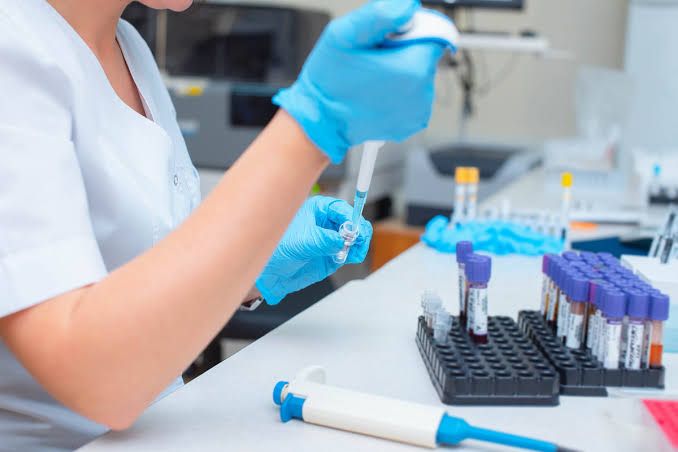
Understanding Hormonal Laboratory Tests in Clinical Diagnosis
Hormonal laboratory tests play a crucial role in the clinical diagnosis of various health conditions by measuring hormone levels in the body. These tests help healthcare providers assess hormonal balance and identify potential disorders related to the endocrine system. Here’s a detailed breakdown of how these tests are utilized in clinical practice.
1. Identification of Symptoms and Clinical History
The process begins with a thorough evaluation of the patient’s symptoms and medical history. Common symptoms that may prompt hormone testing include:
- Unexplained weight changes (gain or loss)
- Mood swings, anxiety, or depression
- Irregular menstrual cycles in women
- Fatigue or low energy levels
- Changes in libido or sexual function
- Sleep disturbances
Healthcare providers will often ask about family history, lifestyle factors, and any medications currently being taken that could affect hormone levels.
2. Selection of Appropriate Hormone Tests
Based on the initial assessment, healthcare providers select specific hormone tests tailored to the patient’s symptoms. Some common hormonal tests include:
- Cortisol Test: Measures cortisol levels to assess adrenal function and stress response.
- Thyroid-Stimulating Hormone (TSH) Test: Evaluates thyroid function, which can impact metabolism and energy levels.
- Estrogen and Testosterone Tests: Assess sex hormone levels for issues related to fertility, libido, or menstrual irregularities.
Each test targets specific hormones produced by various endocrine glands, such as the pituitary gland, thyroid gland, adrenal glands, ovaries, and testes.
3. Sample Collection and Testing Methodology
Hormonal tests typically involve blood or urine samples. Blood samples are often drawn from a vein or collected via finger prick for at-home testing kits. Urine tests may require a 24-hour collection to measure hormone metabolites accurately.
Once collected, samples are sent to certified laboratories where they undergo analysis using advanced techniques such as immunoassays or mass spectrometry. These methods provide precise measurements of hormone concentrations.
4. Interpretation of Results
After testing is complete, results are analyzed by healthcare professionals who compare them against established reference ranges for each hormone. Abnormal results can indicate various conditions:
- Elevated cortisol may suggest Cushing’s syndrome.
- Low testosterone might indicate hypogonadism in men.
- Abnormal estrogen levels can be linked to reproductive issues or menopause.
The interpretation also considers factors like age, sex, time of day (as some hormones fluctuate), and overall health status.
5. Clinical Diagnosis Based on Findings
The final step involves integrating test results with clinical findings to arrive at a diagnosis. For instance:
- If a patient presents with fatigue and low testosterone levels alongside other symptoms like decreased libido, this may lead to a diagnosis of testosterone deficiency.
- In women experiencing irregular periods with elevated estrogen levels, further investigation into potential ovarian dysfunction might be warranted.
In some cases, additional testing may be necessary to confirm a diagnosis or rule out other conditions.
6. Monitoring Treatment Efficacy
Hormonal laboratory tests are not only used for initial diagnoses but also for monitoring treatment efficacy over time. For patients undergoing hormone replacement therapy (HRT) or other treatments aimed at correcting hormonal imbalances, regular testing helps ensure that hormone levels remain within desired ranges and that any side effects are managed appropriately.
In summary, hormonal laboratory tests serve as vital tools in diagnosing endocrine disorders by providing objective data that complements clinical evaluations. They enable healthcare providers to make informed decisions regarding diagnosis and treatment plans based on accurate hormonal assessments.
Examples of the Role of Hormonal Laboratory Tests in Formulating Endocrine Diagnosis
Below are several examples illustrating how these tests contribute to formulating endocrine diagnoses:
Thyroid function tests typically include measurements of Thyroid Stimulating Hormone (TSH), Free T4 (thyroxine), and Free T3 (triiodothyronine).
- Example: In a patient presenting with symptoms of hyperthyroidism (such as weight loss, increased heart rate, and anxiety), a low TSH level alongside elevated Free T4 and Free T3 levels would indicate hyperthyroidism. Conversely, if a patient has symptoms of hypothyroidism (like fatigue, weight gain, and cold intolerance), a high TSH level with low Free T4 would suggest primary hypothyroidism.
2. Adrenal Function Tests
Adrenal function can be assessed through tests measuring cortisol levels, such as the ACTH stimulation test or 24-hour urinary free cortisol test.
- Example: In suspected cases of Cushing’s syndrome (characterized by excessive cortisol production), a 24-hour urinary free cortisol test showing elevated cortisol levels confirms hypercortisolism. Additionally, an ACTH level can help differentiate between adrenal causes (low ACTH) and pituitary causes (high ACTH) of Cushing’s syndrome.
3. Reproductive Hormone Testing
Tests for reproductive hormones like estrogen, progesterone, testosterone, Luteinizing Hormone (LH), and Follicle Stimulating Hormone (FSH) are vital in diagnosing conditions related to fertility and menstrual irregularities.
- Example: In women with irregular menstrual cycles or infertility issues, measuring FSH and LH can help diagnose conditions such as polycystic ovary syndrome (PCOS). Elevated LH relative to FSH may indicate PCOS due to disrupted ovarian function.
4. Insulin and Glucose Testing
Insulin levels along with glucose testing play a significant role in diagnosing diabetes mellitus and insulin resistance.
- Example: A fasting insulin test combined with glucose levels can help identify insulin resistance. In patients with type 2 diabetes mellitus, elevated fasting insulin levels may be present despite high blood glucose levels due to the body’s inability to effectively use insulin.
5. Parathyroid Hormone Testing
Parathyroid hormone (PTH) testing is crucial for evaluating calcium metabolism disorders.
- Example: In patients presenting with hypercalcemia, measuring PTH can help determine the cause. If PTH is elevated alongside high calcium levels, it suggests primary hyperparathyroidism; if PTH is low despite high calcium levels, it could indicate malignancy-related hypercalcemia.
6. Growth Hormone Testing
Growth hormone testing is essential for diagnosing growth disorders in children and adults.
- Example: In children who are not growing adequately, an Insulin-like Growth Factor 1 (IGF-1) test can provide insight into growth hormone activity over time. Low IGF-1 levels may indicate growth hormone deficiency.
Conclusion
Hormonal laboratory tests serve as indispensable tools in diagnosing various endocrine disorders by providing quantitative data on hormone levels that reflect glandular function or dysfunction. By interpreting these results within the context of clinical symptoms and other diagnostic findings, healthcare providers can formulate accurate diagnoses and tailor appropriate treatment plans for their patients.
Importance of Dynamic Hormonal Testing in the Evaluation of Hormone Functions
Hormones are critical biochemical messengers that regulate numerous physiological processes in the body, including metabolism, growth, reproduction, and mood. Evaluating hormone functions is essential for diagnosing various endocrine disorders, understanding metabolic health, and managing conditions such as infertility, thyroid dysfunction, and adrenal insufficiency. Traditional static hormonal testing often measures hormone levels at a single point in time; however, hormones can fluctuate significantly due to various factors such as circadian rhythms, stress, and physiological changes. This variability necessitates a more dynamic approach to hormonal assessment.
Dynamic Hormonal Testing Explained
Dynamic hormonal testing involves measuring hormone levels in response to specific stimuli or suppression tests over a defined period. This method provides insight into how well the endocrine system responds to challenges or changes in homeostasis. For example:
- Stimulation Tests: These tests assess how well a gland produces hormones when stimulated by an external factor. An example is the ACTH stimulation test used to evaluate adrenal function by measuring cortisol production after administering adrenocorticotropic hormone (ACTH).
- Suppression Tests: These tests determine how effectively a gland can reduce hormone production when faced with an inhibitory signal. A common example is the dexamethasone suppression test for assessing cortisol levels in suspected cases of Cushing’s syndrome.
- Circadian Rhythm Assessment: Some hormones exhibit diurnal variation (e.g., cortisol peaks in the morning and declines throughout the day). Dynamic testing can involve multiple samples taken at different times to capture these fluctuations accurately.
Clinical Significance of Dynamic Testing
- Improved Diagnostic Accuracy: By evaluating hormone responses rather than static levels alone, dynamic testing enhances diagnostic precision for conditions like adrenal insufficiency or hypercortisolism. It helps differentiate between primary and secondary causes of hormonal disorders.
- Understanding Pathophysiology: Dynamic tests provide insights into the underlying mechanisms of endocrine disorders. For instance, they can reveal whether a problem lies within the gland itself (primary) or if it results from inadequate stimulation by pituitary hormones (secondary).
- Guiding Treatment Decisions: The results from dynamic hormonal testing can inform treatment strategies by identifying specific dysfunctions within the endocrine system. For example, if a stimulation test indicates insufficient hormone production despite adequate stimulation, this may suggest primary adrenal insufficiency requiring replacement therapy.
- Monitoring Treatment Efficacy: In patients undergoing treatment for hormonal disorders, dynamic testing can help assess how well therapies are working over time and whether adjustments are necessary based on physiological responses.
- Personalized Medicine Approach: As healthcare moves towards personalized medicine, dynamic hormonal testing allows for tailored interventions based on individual responses rather than generalized protocols.
Conclusion
Dynamic hormonal testing plays a crucial role in evaluating hormone functions by providing comprehensive insights into endocrine health that static measurements cannot offer alone. Its ability to assess both baseline levels and functional responses enhances diagnostic accuracy and informs effective treatment strategies while contributing to our understanding of complex hormonal interactions within the body.







